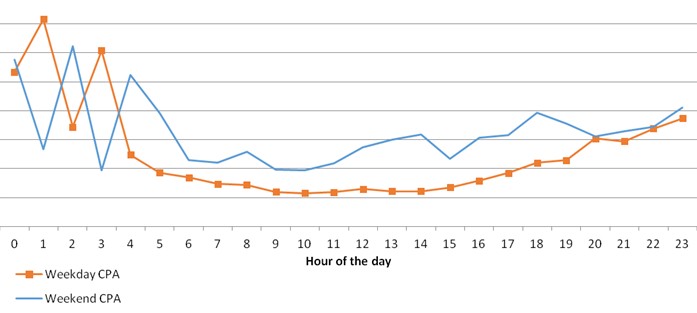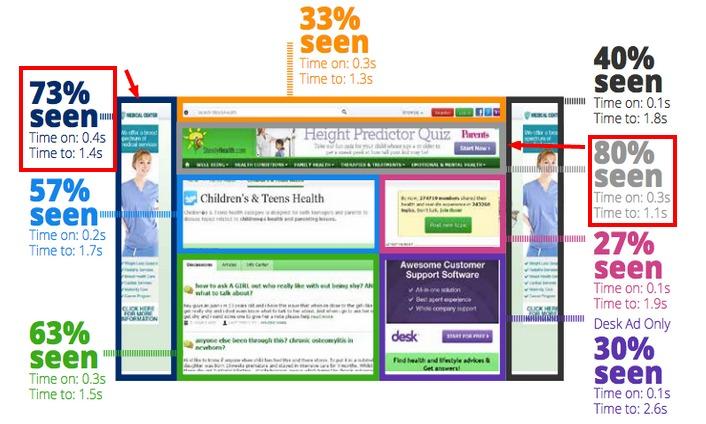Online publishers rely heavily on digital Ad Operations for revenue generation.
After all, what good is a quality website if it’s not making you any money?
The introduction of programmatic advertising has given us some great automations (line items, header bidding wrapper, demand handling, direct server connectivity). However, the manual intervention to improve earnings has increased.
In ad tech, Ad Operations work for both sides—sell-side and buy-side. The constant efforts from both ends make the ad campaign successful. In this post, we will majorly focus on sell-side (publisher-side).
What is Digital Ad Operations (Ad Ops)
Digital Ad Operations (A.K.A. ad operations, ad ops, online ad operations) refers to the systems and processes that support ad management and their delivery through digital mediums. This includes a display (banner and rich media ads), video, text, search (Google search ads), mobile advertising, and more.
Ap operations is a team/department directly responsible for revenue generation through ad campaigns.
In a nutshell, Ad Ops is responsible to set up, run, manage, and test the ad campaigns. For that, the team interacts with various platforms including ad exchanges, ad networks, ad servers, SSPs, DMPs, and more.
Aspects of Ad Operations (Ad Ops)
No matter, an Ad Ops team handles one publisher account or multiple accounts, here are some of their major responsibilities:
Trafficking
It involves monitoring and delivery across ad exchanges, tracking third-party ad tags from different vendors, and also performing troubleshooting when necessary. An ad trafficker is a person taking care running an ad campaign, with the help of an ad server (like Google Ad Manager).
Scheduling
The timing of ads also plays an important part in the success of an ad campaign. Thus, some ads are made active for certain hours of the day, and others for different. For instance, special days such as holidays, weekends, etc. also contribute towards efficient Ad scheduling.

The graph above projects the CPA (cost per action/cost per acquisition) data of a certain B2B business. As it is noticeable, the CPA is lower during the standard business hours – 9 AM to 6 PM.
However, other non B2B industries such as home improvement tend to get lower CPA during the weekends, the time when their target clients – the homemakers, are more active on the Internet.
Optimization
Ads need to be polished, SEO optimized, and altered according to changing trends and standards. There are many other factors that improve the CTC (cost to click) factor, which include the location of the banners itself. Depending on the layout of a certain website some spots on the pages may suit better for the ad displays than others.

The image above shows how ad placement can make a big difference in optimization. However, the structure may not be applicable for all websites, as ads have to be optimized differently for different websites.
Demand management
Most premium publishers have a huge sales team responsible for fetching great demand from the market for the website. With multiple demands and more being added every now and then, publishers look for individuals to manage the demand. This includes noting down the terms of each contact, participating in negotiation, and keeping track of their performance.
Yield Management
Everything the Ad Operations team does boils down to one thing—revenue. The person taking care of yield management looks for various opportunities leading to better revenue generation via advertising. For instance, structuring websites based on user interactions (high clicks or impressions), then allocating pricing to the different parts of inventory for better profits.
Learn More:
The Best Blogs, Podcasts, and Resources for Ad Ops Professionals
Ad Publishing and Campaign Management
Good Advertising does not just circulate information. It penetrates the public mind with desires and belief.
William Bernbach, Agency Founder, Doyle Dane Bernbach
Successful ad campaigns demand careful planning and calculated actions. The following are the basic steps for a good campaign:
Setting the Objective
Before starting anything it is important to have a clear goal associated with the campaign. Is it increased revenue? Is it brand promotion? Or both? Unless this is established you must not proceed further.
Selecting Media for Message Delivery
There are a lot of platforms for reaching the target audience: email banners, social media, video content based websites, etc. Depending on the ad message the most suitable medium has to be decided.
Creating the Message
The entire campaign should be centered around one strong message, which also should be very clear.
Evaluating Results and Making Changes
Post the release of a campaign the results have to be analyzed, and used for re-configuring the campaign.
Tools and Platforms to Use for Ad Operations (Ad Ops)
To maximize revenue through your ad campaigns it is essential that you have a decent toolkit in place. There are a variety of powerful softwares and platforms that you can use, for free in most cases.
1. HerderBid Expert
It is a free Chrome extension that allows you to see the number of header bidding partners active on a webpage. This can also be used to see the time taken by each partner to bid on inventory and use optimization tips to improve this time to run better auctions.
2. Google Publisher Console
Is a debugging platform by Google Ad Manager that helps find delivery-related errors by examining the line items. The audit includes checks related to ad tags, page latency, ad delivery speed, and demand performance checks.
3. Video Tag Validators
You need a reliable video tag validator to ensure that your video ads function without any problems. For instance, Tremor’s Video VAST/VPAID Tag Validator allows you to test and verify the expected behaviours of a specific ad tag. You can use it for different kinds of video players, and compare banner ad sizes to optimize your website accordingly.
4. Google VAST Inspector
The Google VAST (Video Ad Serving Template) Inspector is a handy tool that allows you to verify your video ads. It allows you to enter the video URL to monitor its working.
5. HTML Code Cleaner
Incorporating ad snippets in your HTML code can make it look messy rather easily. You can thus a decent HTML code cleaner that will clean up your code in a jiff, making it more manageable. Some good options include DirtyMarkUp, HTMLTidy, etc.
In-house vs. Outsourced Ad Operations
In-house Ad Operations includes a team taking care of the entire inventory of a publisher (or website). All of their targets and strategies are designed keeping that website in mind.
However, when it comes to partnering with other networks, exchanges, and agencies; publishers end up taking help from outside agencies for Ad Operations. Outsourced Ad Operations brings advanced strategies to the table.
To get the best of both worlds, most medium-to-large publishers go for in-house as well as outsourced Ad Operations. In-house Ad Ops give them a sense of security and trust. And outsourced Ad Operations improve their profits by getting them better demand available.
Also publishers with traffic in billions of dollars, feel overwhelmed when it comes to managing the audience. In such a case, they divide their traffic among outside agencies, which helps them improve their profits without getting their hand dirty while optimizing for each impression.
Learn More:
Outsourced Ad Ops: 8 Reasons Why You Should Consider a Vendor
Conclusion
A successful ad campaign means different for publishers and advertisers. Publishers want to better ad revenue by keeping their user experience flawless. And advertisers look to reach the right audience, show them a great ad, and convert them.
This is where Ad Operations from both sides come into the picture, creating strategies to satisfy their requirements.
Without Ad Operations, publishers’ ad inventory would become stagnant—boring layouts and no testing. Hence, having an Ad Ops team is not an option, but an integral part of the programmatic ad industry.
Digital Ad Ops don’t have to be complicated. The key is to get a good understanding of all the aspects associated with it before you jump in with both feet. Once you have learned the basics of its foundation, you can easily make your way up from there.
Learn more:
5 Questions with Justina Palinavičiūtė, Head of Ad Ops at Bored Panda
5 Questions with James Hume, Ad Ops Director at Neverstill Media
5 Questions with Brandon Dawson, Ad Ops Director at Render Media
This is a guest post by Anshul Motwani, founder and CEO at WittyPen.com, he frequently speaks on content marketing and advertising has worked with multiple startups to help build and fine-tune their content strategies, and has also overseen ad operations and optimization in his previous ventures.
Frequently Asked Questions: Ad Ops
Digital Ad Operations (ad ops) is responsible to set up, run, manage, and test the ad campaigns. For that, the team interacts with various platforms including ad exchanges, ad networks, ad servers, SSPs, DMPs, and more.
In-house Ad Operations include an internal team taking care of the entire inventory of a publisher. All of their strategies are designed keeping that website in mind.
However, when it comes to partnering with other networks, exchanges, and agencies; publishers end up taking help from outside agencies, called outsourced ad operations. Outsourced ad ops brings advanced strategies to the table.
Some of the most commonly used ad ops tools are:
HerderBid Expert
Google Publisher Console
Video Tag Validators
Google VAST Inspector
HTML Code Cleaner

Deepak has a keen eye for detail and a deep understanding of the ad tech landscape. Whether it’s through in-depth articles, thought-provoking insights, or compelling storytelling, he’s dedicated to helping people navigate the complex world of ad tech with the simplicity of his words.





![28 Best Supply Side Platforms (SSP) for Publishers in 2024 [The Complete List] Supply Side Platforms](https://www.adpushup.com/blog/wp-content/uploads/2022/05/undraw_chore_list_re_2lq8-270x180.png)

